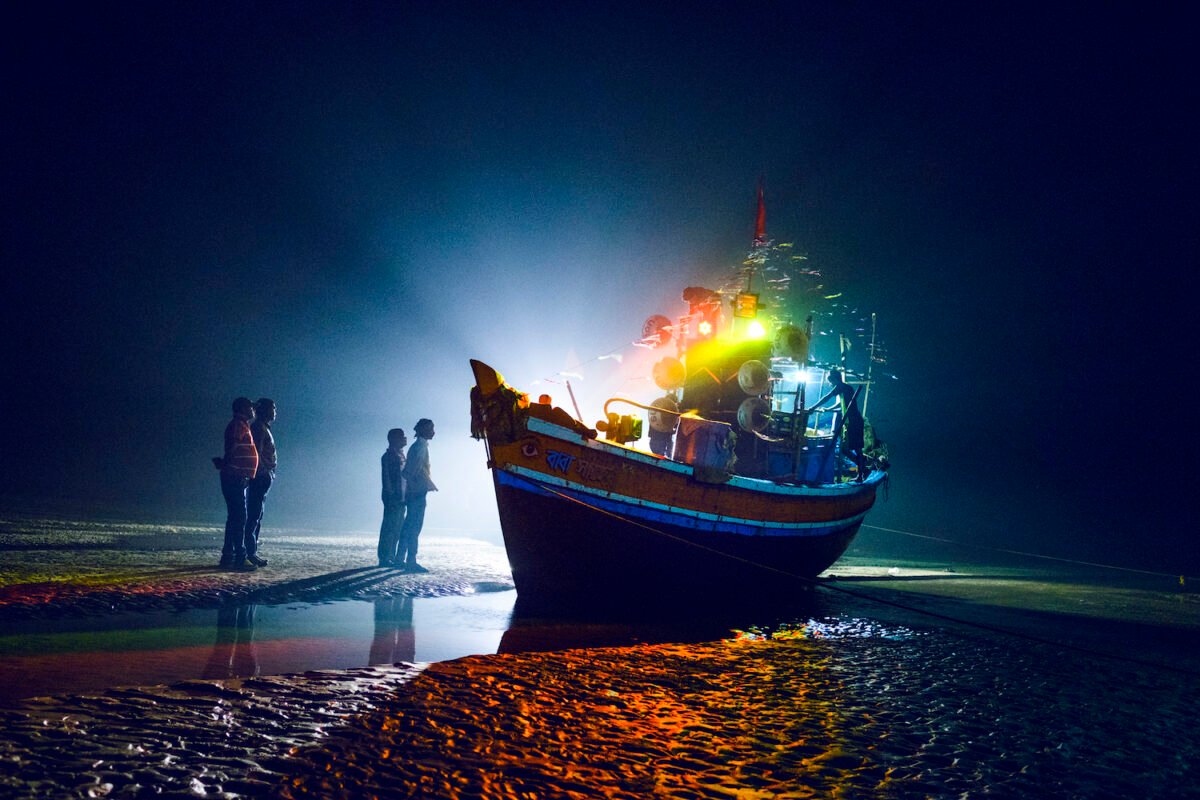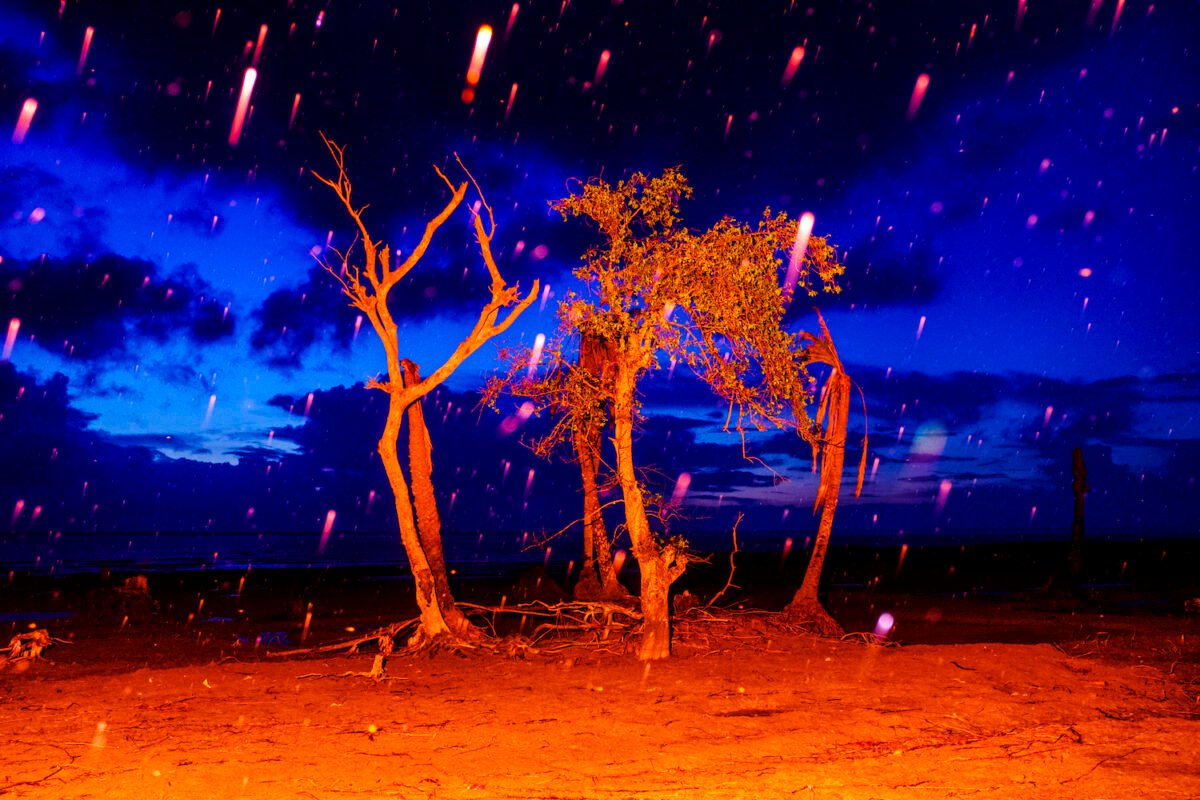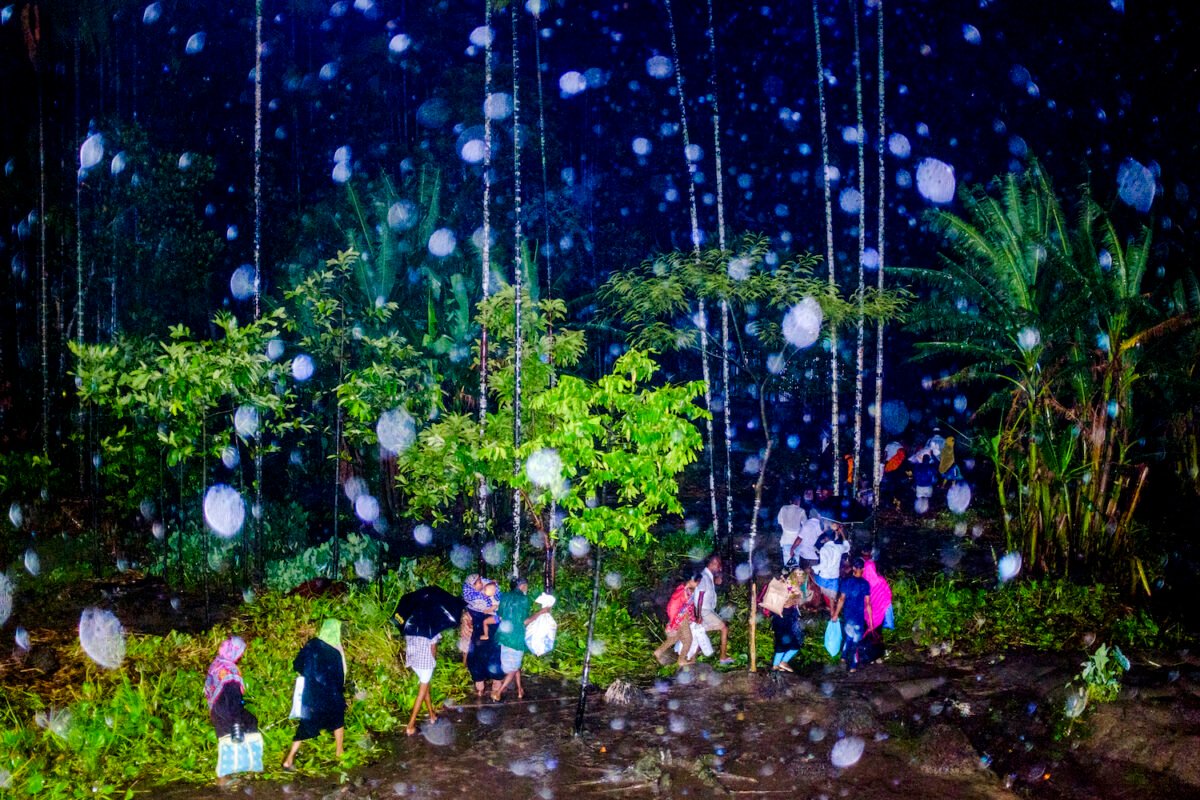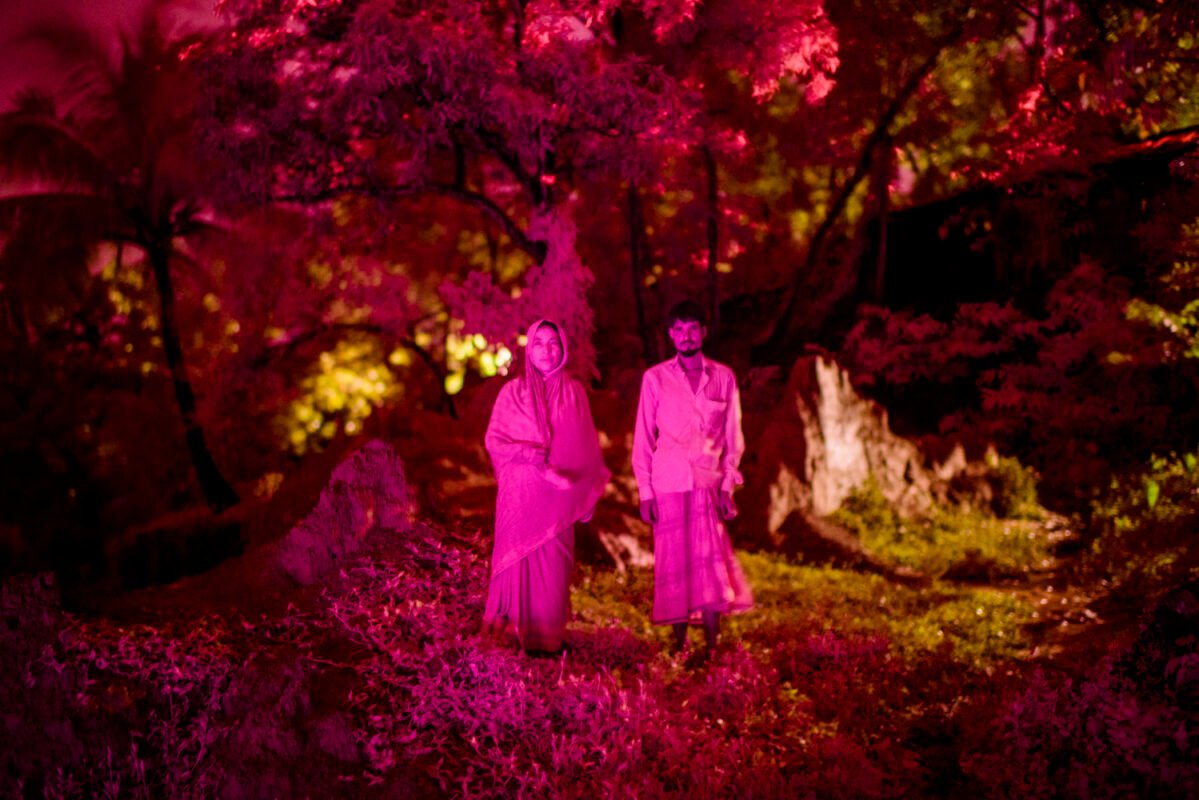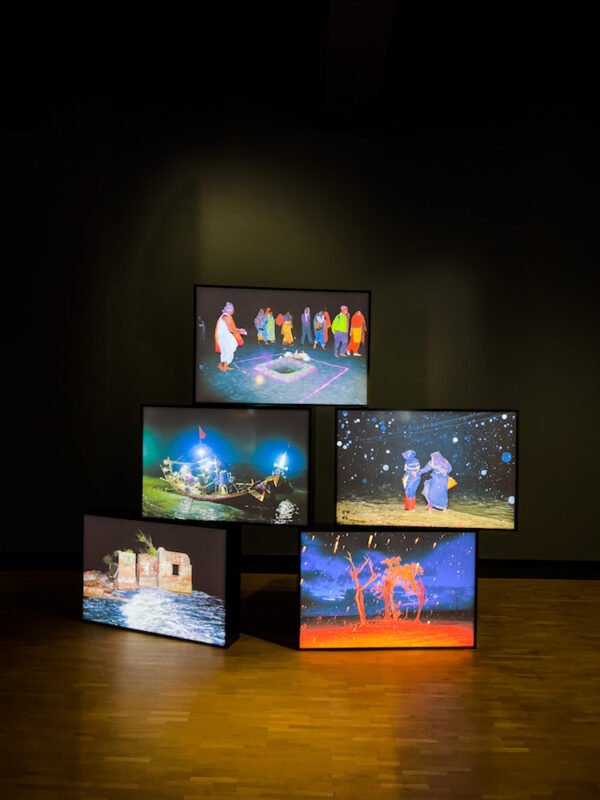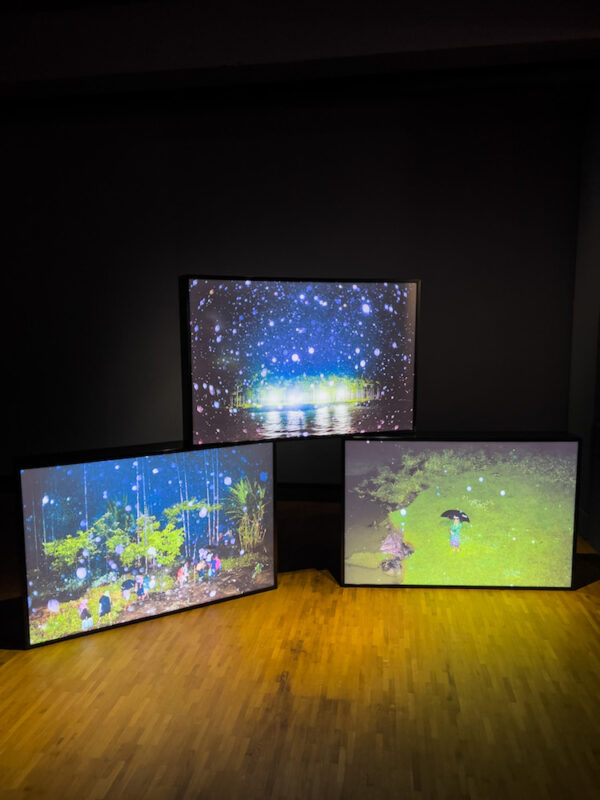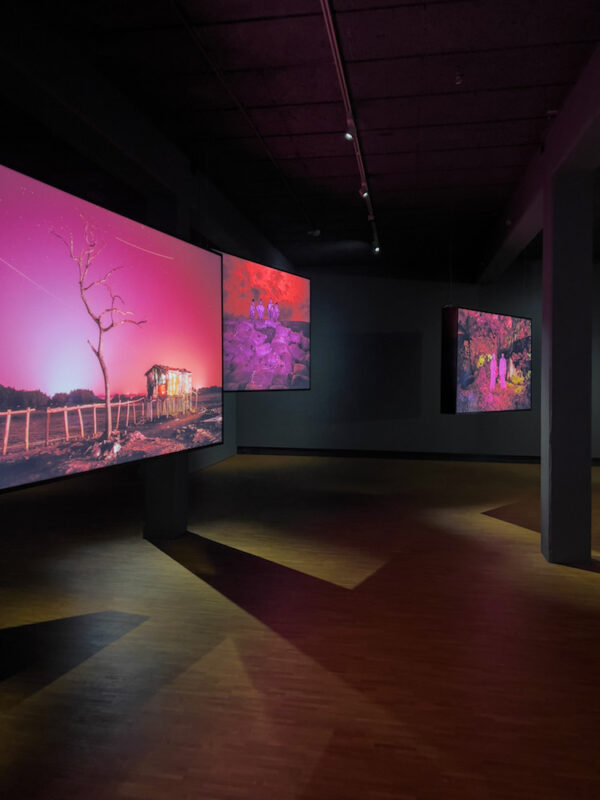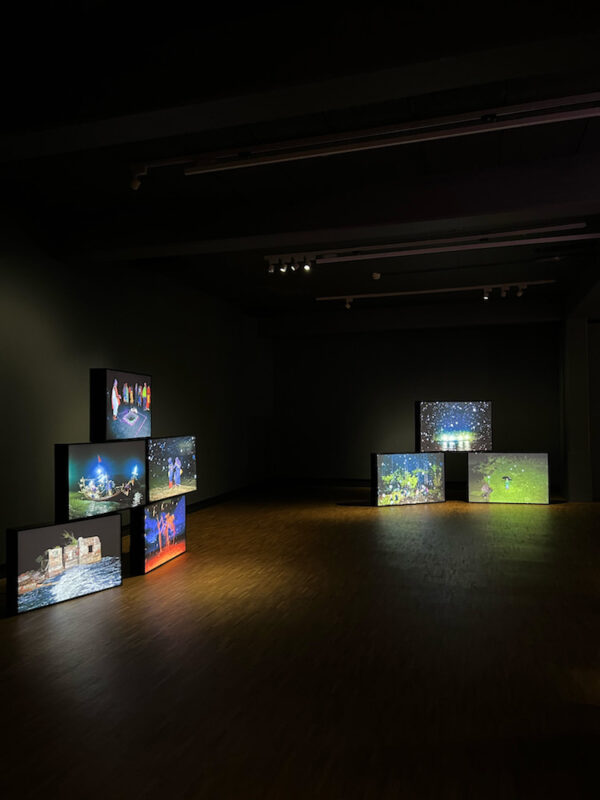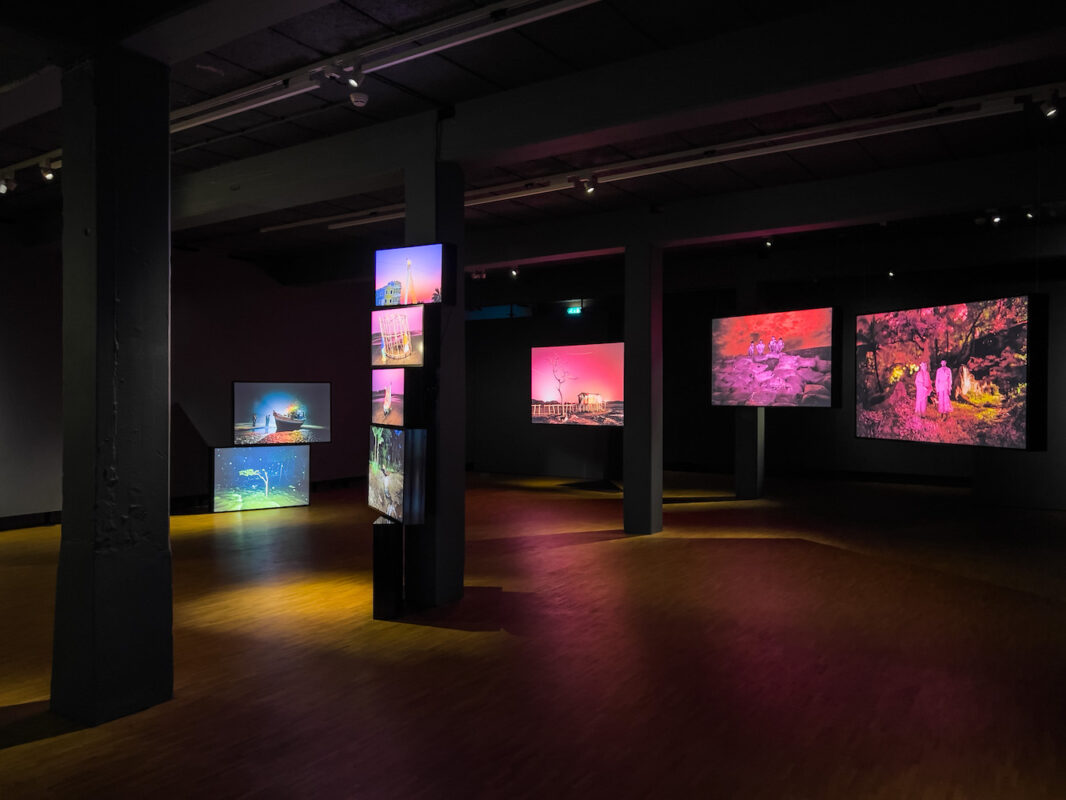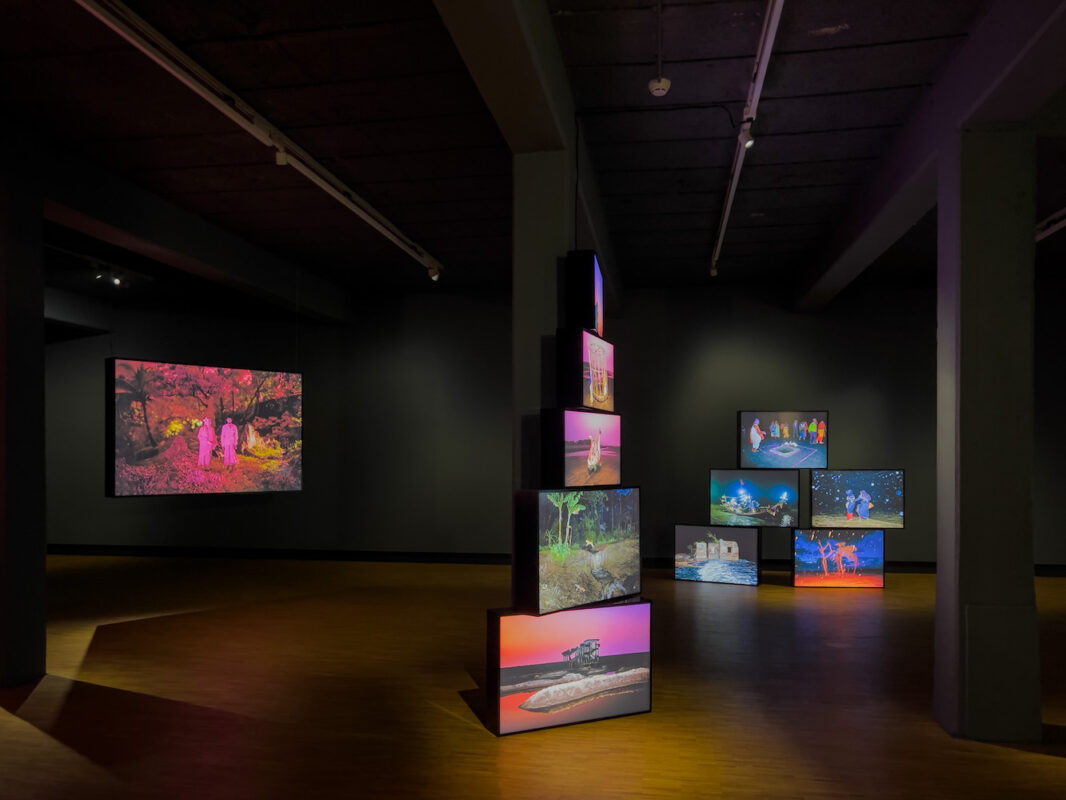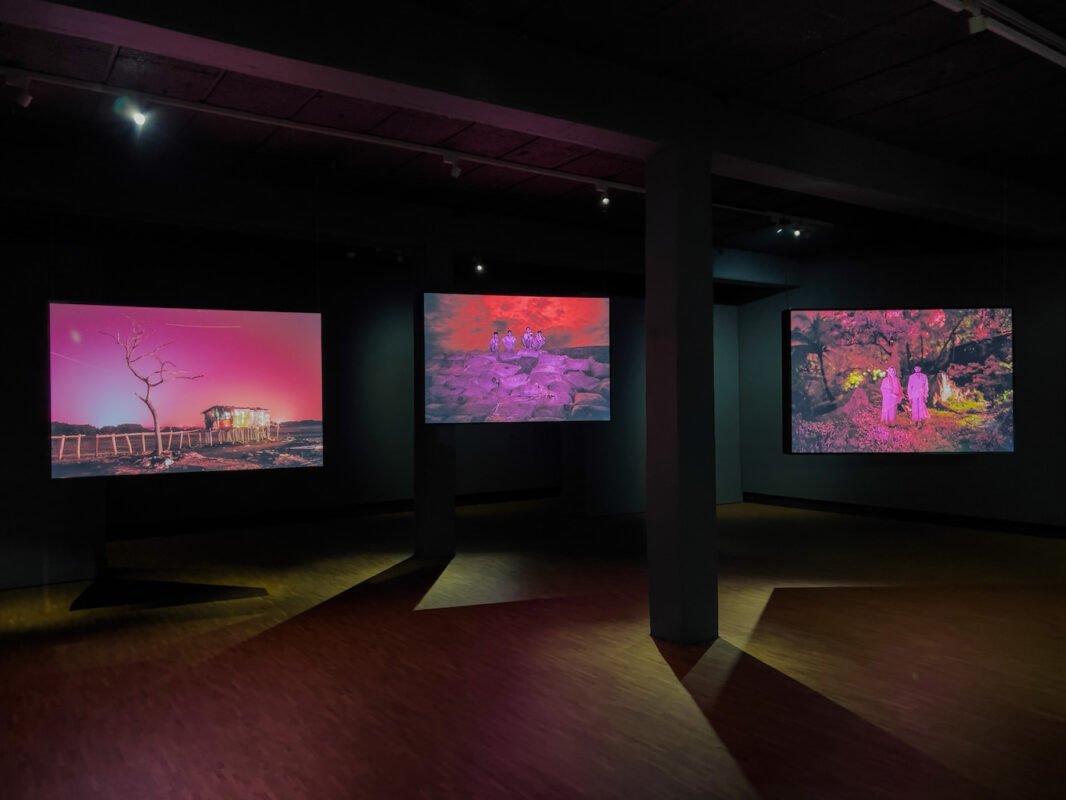Arko Datto
Kings of a Bereft Land
Interview with Willemijn van der Zwaan
Arko Datto speaks with Willemijn van der Zwaan about Kings of a Bereft Land currently on display at Fotomuseum Den Haag, the Netherlands. They discuss the challenges of portraying the psychological effects of the ongoing planetary crisis, creating hyper-structures for multiple projects and the fundamental role of the artist in altering perception and shifting viewpoints by proposing new ways of seeing.
Willemijn van der Zwaan: Climate change is the global problem on everyone’s mind, and we’re inundated with images of rivers that have dried up, flooded cities or starving children. We seem to have become quite apathetic as a consequence of this. Was that an inspiration for you, to make a project about a story within a story – in this case, how the people of the Sundarbans in the Bay of Bengal are bearing the brunt of the consequences of our consumption – but also to do it in a way that is a more visually interesting approach to documenting this crisis?
Arko Datto: As an artist, I am constantly looking for interesting ways to portray something as challenging as the ongoing planetary crisis. The particular difficulty in this case was to reconcile the localised context of the crisis facing the inhabitants of the Delta with the philosophical implications of a global crisis facing humanity at large. A vast majority of imagery related to the climate crisis is related around cataclysmic events as they unfold: forest fires, cyclones, earthquakes, floods. Yet in places like the Bengal Delta, sea level rise and river erosion are ongoing phenomena affecting the lives of the inhabitants on a continual daily basis. When a catastrophic event unfolds, there is a bustle of activity and chaos centered around that event and that leads to a particular form of imagery. This project is concerned more with the ongoing effects of climate change, particularly during the non-event moments when climate change gradually extends from the environmental into a more psychological realm.
WVDZ: That extension into the long-term effects of climate change is an important aspect of what drew me to your work. I could sense the chaos and panic of what it must be like to have to flee your home when the water comes. As someone who lives in a delta here in the Netherlands, I’m very aware that we have this whole infrastructure of dams and dikes to protect us from the same fate (for now). An important aspect of the project and the exhibition is in making a larger public aware of these psychological effects of the climate crisis: the constant threat of your home, village and even family and friends being taken away from you takes a heavy toll. How did you approach visualising anxiety and dread?
AD: Away from the bustling metropolises of Dhaka and Kolkata, the Delta lies shrouded in darkness. At night, faced with an all-encompassing darkness, the spectre of the waters taking away home, friends and family increases manifold times. Water is envisioned as the object of terror in this conceptualisation of the site of climate change as a conflict zone. A slippery, wet, water-borne world is presented where the human lives are completely predicated by their interactions with water. My project tries to give form to this multi-variate sense of helplessness in the face of this crisis with the use of flash photography at close quarters on one hand, and infra-red imagery on the other.
WVDZ: The two series we’re showing at Kings of a Bereft Land at Fotomuseum Den Haag (Where Do We Go When the Final Wave Hits and Terra Mutata) are part of a larger trilogy, entitled Shunyo Raja. Working in trilogies seems to be a pattern for you, as seen with earlier projects. What attracts you to this kind of storytelling?
AD: I work primarily on long-term projects and am interested in creating hyper-structures within which to house my projects. Trilogies hence present an exciting prospect for me, allowing the development of a particular theme in depth by incorporating a plurality of ways of visualising and conceptualising.
WVDZ: On the subject of storytelling and trilogies, you seem to relish exploring the possibilities of photographic techniques and how to best utilise these to emphasise a particular subject. Each chapter in Shunyo Raja has a different feel. Was that a conscious choice for you?
AD: The different trilogies I have worked on progress along different conceptualisations. The Night Trilogy (the first two chapters of which were published by l’Artiere Editions) explores the night and nighttime in three different geographical locations. The Cyber Trilogy, which I developed roughly a decade ago, investigated three distinct cyber phenomena.
The three chapters of The Shunyo Raja Monographies propose different ways of visualising and reading the same site of climate change, which is the Bengal Delta in this case. Each has a distinct feel that stems from the conceptualisation of that particular project. The first chapter, Kings of a Bereft Land, uses a more formal approach, presenting landscapes and portraits shot during daytime. The second chapter, Where Do We Go When the Final Wave Hits, uses flash photography at nighttime. This chapter depicts an unfolding dystopia by exploring the psychological ramifications of climate change at night when the omnipresence of water transforms into a veritable symbol of terror. The third chapter, Terra Mutata, uses full spectrum and infra-red imagery to envision the site of climate change as a conflict zone, looking at the haunting remains of architecture and people, refracting time to present the unfolding crisis as a near future post-apocalyptic spectre.
WVDZ: For the exhibition at The Hague, we’re showing your projects more as an installation than a traditional photography exhibition. So, there are no frames or prints on the wall this time, but instead light boxes stacked on top of each other and suspended from the ceiling. Because the works themselves are literally glowing and illuminating the space, it has quite a dramatic effect. It can be even confronting, walking in between the images. Does a presentation like this add another layer to the project for you?
AD: I am interested in the possibilities of photography exhibited within installation and/or sculptural frameworks and this exhibition realises that in a really effective way. In addition to the sizes of the images in the lightboxes, walking around the space in between the constellations of images heightens the feeling of being inside or within this zone of climate change. One really encounters the psychological realms that the darkness engenders in the Delta via this installation framework. While photobooks circulate in smaller, niche specialist circles, this show opens up new possibilities. Being up for five months also allows a wide and general public to visit and interact with the show.
WVDZ: When you think about what environmental activism actually is, I think a lot of people go to Greta Thunberg organising a school strike, throwing soup against famous artworks or protesters blocking highways. But it’s of course a multi-faceted movement, in which artists and photographers are playing a key role. How would define environmental activism and how do you think your work relates?
AD: I do not see myself as an activist. My projects are not outcome-oriented nor driven with specific objectives in mind other than a broader framework that serves as a general plea for humanity and humankind to save itself from the difficult futures we are racing towards. I would hope, however, that the works inspire others to become activists or artists or artist-activists in their own stead and also serve as a repository or archive or point of reference for future discourses on the planetary crisis.
The artist has a fundamental role to alter perception and shift viewpoints by proposing new ways of seeing. By doing so, the artist enables the artwork to inspire the audience towards taking action, thereby enabling change. While art could in some instances provide solutions, the real concrete solutions need to come from science, technology, architecture and stronger democratic frameworks. I hope my art will motivate people to push for these solutions or start demanding for change in more concerted ways.
WVDZ: I also like to think about the arts as a place for progress, where artists can play an important role in both bringing people together on an issue, but also challenging audiences (and themselves) into thinking about unusual solutions to problems. Do you share this perhaps overly optimistic view?
AD: I am against tinting projects or creative discourses with hope unnecessarily. It is a given that things will become much worse before they eventually get better. The point of this work is to prepare consensus and convince people to decisively come together to get to the point where things can get better: therein lies the optimism of this work. Coming from a science and technology background, I do believe that the main solutions will come from there, however the arts can motivate or inspire people to think about the world and respond to its needs or to look for those solutions in science and technology.
WVDZ: You are moving into film, and you are incorporating infrared imagery into this as well. Do you see film as a logical step in the evolution of your visual language?
AD: Increasingly, I am working with film, extending hitherto existing photography projects into video. I am interested in the changes that manifest in the passage from still to moving image and the artistic possibilities contained therein. We return to the landscapes and people that figure in my long-term photography project, across India and Bangladesh. Through an elaborate and complex interweaving of photography from my trilogy, low-res mobile phone video archives from those impacted by climate change, new hi-res video footage, text and poetry, I have not only ruminated on the effects of time and the role of the image, but also on memory, landscape and loss. ♦
All images courtesy the artist and Fotomuseum Den Haag, the Netherlands © Arko Datto.
Installation views of Kings of a Bereft Land at Fotomuseum Den Haag, the Netherlands, until 21 May 2023.
—
Arko Datto is an artist, lecturer and curator. His photographs have been published in TIME, National Geographic, The New Yorker, The Atlantic, Trouw, de Volkskrant, Vrij Nederland amongst others. His work has been exhibited at venues around the world, including SFO Museum, San Francisco, US, Hamburger Bahnhof, Berlin, Germany, and the Museum für Angewandte Kunst, Frankfurt, Germany. He has published three photobooks: Pik-nik (Editions Le bec en l’air, 2018), Mannequin (Edizioni L’artiere, 2018) and Snakefire (Edizioni L’artiere, 2021). He co-curated the Chennai Photo Biennale in Madras, India, in 2021. Datto is represented by East Wing Gallery, Doha.
Willemijn van der Zwaan has served as Curator of Photography at Fotomuseum and Kunstmuseum Den Haag since 2019. She studied Art History at the University of Utrecht, the Netherlands, where she specialised in photography during her masters in Modern and Contemporary Art. After graduating in 2012, she worked as a gallery manager, independent writer, researcher and critic. She has contributed to multiple photobooks, including Sanne Sannes: Copyright/Archief (2015), Bastiaan Woudt: Hidden (2019), Popel Coumou: Paper and Light (2020) and Jeroen Hofman: Island (2022).
Images:
1-“Sagar Island, India” (2019), from Where do we go when the final wave hits. © Arko Datto.
2-“Mousuni Island, India” (2018), from Where do we go when the final wave hits. © Arko Datto.
3-“Along the Meghna river, Bangladesh” (2017), from Where do we go when the final wave hits. © Arko Datto.
4-“Chakariya Upazila, Bangladesh” (2020), from Terra Mutata. © Arko Datto.
5>11 Installation views of Kings of a Bereft Land (2023) at Fotomuseum Den Haag, the Netherlands. © Arko Datto.

